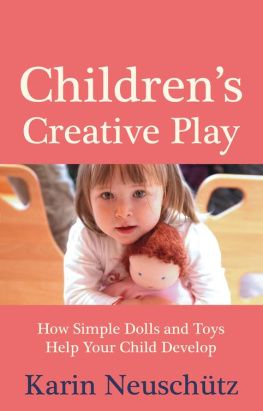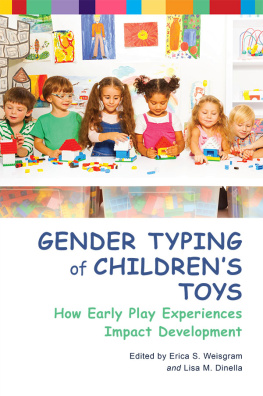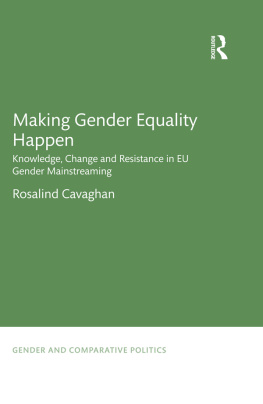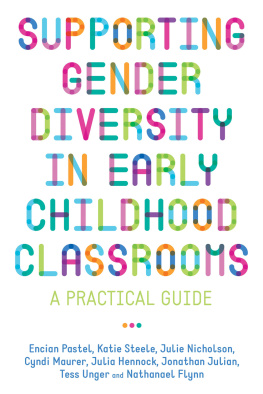Contents
Guide
Page List
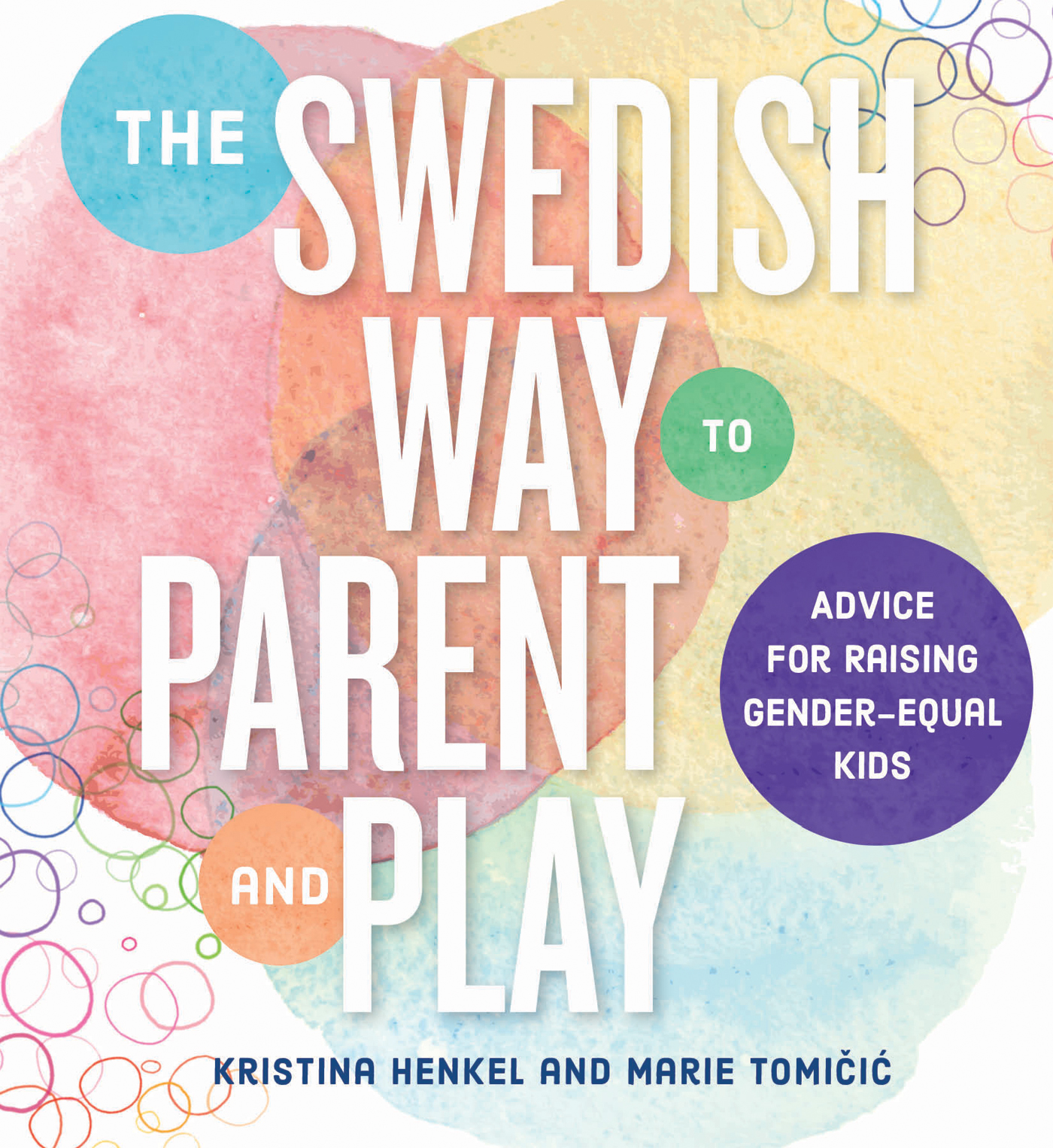
Kristina Henkel and Marie Tomii
Tranlsated by Paulina Essunger
The Swedish Way
to Parent and Play
Advice for Raising Gender-Equal Kids

All human beings are born free and equal in dignity and rights.
article 1 of the un universal declaration of human rights
All children are of equal value. You are unique. You and all other children and youth are to be respected. It does not matter what kind of family you have, what country you are from, what language you speak, what you believe in, what gender you are, with whom you fall in love, or whether you have a disability.
the swedish public advocate for children
Welcome
Its been a decade since we wrote the first lines of this book in Swedish. Nevertheless, the content is still current. Thats because gender equality is about freedom and rights and power: the power to impact our own lives and our society. Equality doesnt happen on its own or automatically increase over time. It takes courageous and stubborn people who have the strength to change and to advocate.
We would love to be able to cross off a number of gender traps and say, Thats all in the past now. But we are not there, yet. This edition includes all the old gender traps. And weve even added some new ones. Some of these are about boys and violence, because violence is a major societal problem. Weve also written more about gender identity, because binary norms are beginning to soften. The gender-neutral pronoun hen is used by Swedish media and on blogs and TV shows; the singular they is becoming more common in English. More and more children are also challenging gender categories and creating their own identities.
Over the years, weve heard wonderful things about our book, how its helped people see everyday gender inequalities and has increased gender equality for children. We want to extend our heartfelt thanks for all these wonderful comments! If youre reading the book for the first time, we hope you will be inspired to think about and work on gender equality in new ways. If we work together, maybe we can cross off a few gender traps in time for the next edition. The children will be better off for it!
Kristina Henkel and Marie Tomii
Contents
My child was treated totally differently depending on whether she wore a red hat with flowers or a green hat with stripes with her dark blue overalls. When she wore the red one with the flowers, shed be told that she looked very pretty. When she wore the green one, shed be told that she looked very lively and strong.
kristina henkel
Adults told my son that his white sneakers with sparkles were girls shoes. He was seven and really proud of having chosen those shoes himself.
marie tomii
Imagine if Hugo and Omar could hug each other without being teased. Imagine if Omar were allowed to cry just like Adriana. Imagine if Ella didnt have to clean up when Gustav made a mess. Imagine if Gustav could play with dolls. Imagine if all children were allowed to be how they want to be. Imagine if we, as adults, could stop limiting our children.
This book is about how and when our children are gendered and made into girls or boys. Its about gender traps and cruxes. We call them traps because theyre easy to fall into and they limit our children; cruxes because the questions are complex, and simple solutions cannot always be found. Gender traps and cruxes result in children being treated one-dimensionally. This, in turn, limits their potential to develop into free and unique individuals.
To gender (verb) = To sort children, adults, toys, etc. as feminine or masculine, assign them different properties and values, and place different expectations on them.
The gendering of children really jumped out at us once we had our own kids. Even though wed often been assigned stereotypical roles as girls or womenroles we didnt always feel comfortable inwe didnt expect our children to be gendered so frequently and to such an extent. We also realized that, often, it wasnt done on purpose; it happened at a subconscious level.
Gender (noun) = Socially constructed sex. Ideas about what is considered feminine and masculine. These ideas can change over time.

The gendering starts before a child is even born, during pregnancy. Most people are very curious (Do you know if youre having a boy or a girl?) and look for clues. Everything, from the shape of the belly, to the heart rate, to how much the baby is kicking, is interpreted as some kind of sign. Once born, boys and girls are dressed in different kinds of clothes and in different colors. We speak to them using different tones of voice, using different words; when they cry, we interpret their cries differently. We attribute different characteristics to girls and boys, and we encourage them to behave differently. All in all, throughout their first years of life, children undergo a number of rituals that mold them into girls or boys. All of this occurs as if it were totally self-evident that it should be this way. Since childhood, we have been told that there are and should be differences between boys and girls; however, we dont always consider the consequences for the children. We dont consider that when we gender children, we approach them one-dimensionally. We dont take into account the inequalities we create.
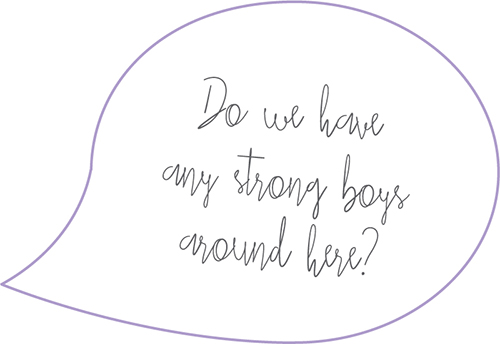
In this book, we want to show easy ways of giving children more options, by treating them as individuals instead of as either girls or boys. The truth is, in spite of all the talk about gender equality and despite most people agreeing that equality is important and valuable, its not always that easy to take the step from thought to action. How, then, do we actually create gender equality?

Gender equality (noun) = Giving all human beingsadults as well as childrenequal opportunities, rights, and responsibilities, irrespective of gender.
We have grouped the gender traps and cruxes into six chapters, each of which illustrates a different aspect of gender inequality. The examples are taken from everyday life, since thats where were formed as individuals, children and adults alike: at the dinner table, during story time, while playing. These are the momentsthough they may seem small and insignificantwhen we create reality and can foster gender equality. When considered in isolation, any gender trap may seem benign, but, taken together, they indicate a structure in our society that gives the children we sort into the girl category one set of opportunities and those we sort into the boy category, another.
We also offer suggestions for how to think and act in new ways in order to open up opportunities for children in the midst of everyday gender stereotyping. These suggestions are meant to inspire; as a reader, you will have your own ideas. Some suggestions will be easier to put into practice than others. Learning to do things differently may take a while, and it will probably take even longer before it comes naturally. But dont give up! Little things make great things possible.



